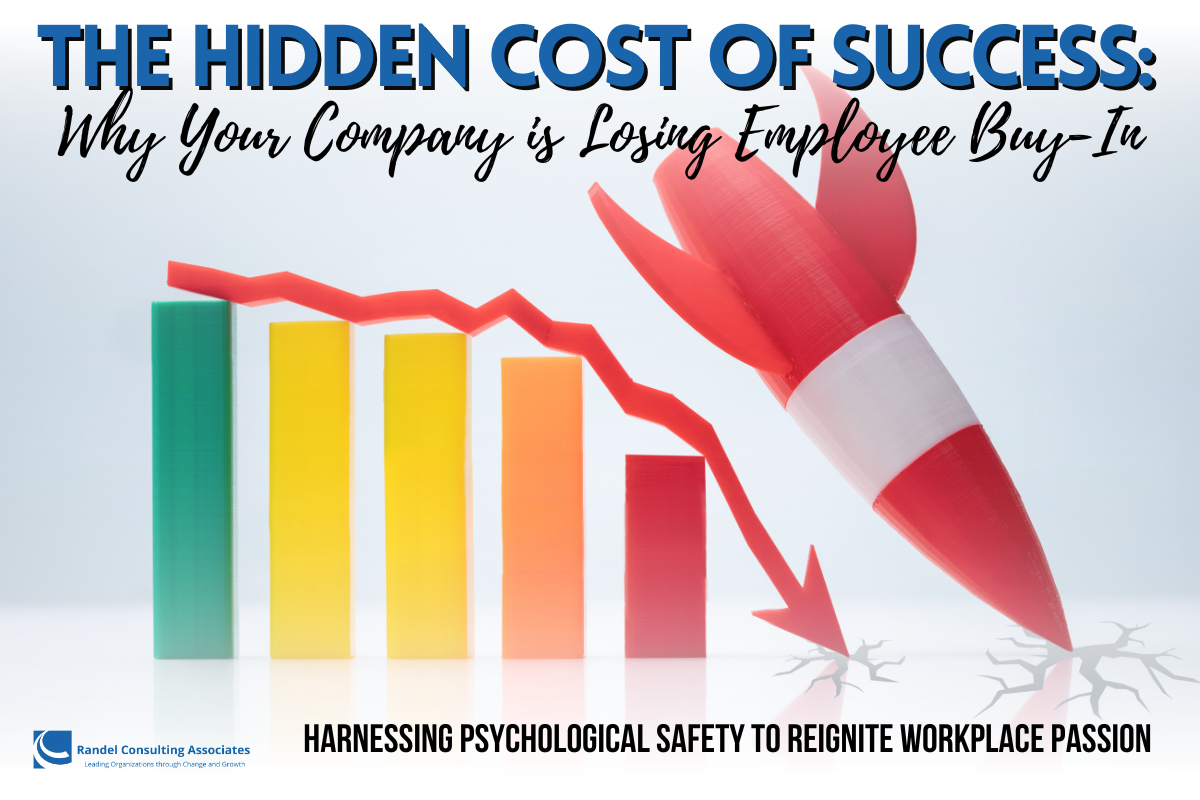In a world where company growth and success should fuel employee satisfaction, 67% of staff are not positively engaged. Here’s why, and what you can do about it.
The Engagement Paradox
I recently heard from an executive-level leader at a growing company. This company was good at what it did, it had a sterling reputation, and its work was known to make an impact. As a result, it was receiving new investments and contracts, fueling its growth.
This created plenty of new opportunities for staff, in the form of promotions or expanded responsibilities for more complicated projects.
And yet…
People were not happy.
In fact, engagement survey results revealed that as many as 52% of the staff were not positively engaged. With almost 20% of staff shown to be actively disengaged (meaning that they might be trying to subvert or sabotage the current state), that meant that only 33% of staff reported themselves as engaged.
More concerning for this executive is that a greater percentage of remote staff reported being satisfied—with onsite staff having the lowest percentage of positively engaged people.
A Shared Pain
Did you wonder for a moment if I was describing your company?
No, I’m not! In fact, this is a fictional story, drawing on the latest results from the global Gallup survey on Employee Engagement.
And these results have barely changed over the last 15 years.
What is going on inside organizations across the country and around the world?
It’s complicated. However, I’m not going to pretend that I have some special insight that has eluded leaders and researchers for decades. I don’t.
But I do have a hunch… because I know what it feels like when a boss shuts you down, dismissing your ideas for addressing a perennial issue in the workplace.
A Possible Root of the Problem?
I’ve worked with dozens of companies and organizations in more than a dozen countries over the last 30 years. And I’ve met with and spoken to leaders from hundreds more companies.
Here’s what I think is part of this issue… People don’t feel like they belong.
- They are not sure what is expected of them at work. They can’t see how their work contributes to the company’s mission.
- Fewer than half say that someone at work cares about them as a person. They rarely receive recognition for the work they do.
- They don’t have someone encouraging their development. And they don’t feel that they are learning and growing.
- They don’t believe that their opinion matters.
- They don’t believe they matter to their employers.
Given this picture—and the long-term pattern of which it is a part—should we be in despair?
I don’t think so!
Look, turning this situation around will not be easy. It will take time, it will require continued championing from senior leaders, and all managers will need to be enrolled to ensure consistent messaging and actions.
The aim of this focused attention is to increase the sense of Inclusion and Belonging across the company.
And I want to spotlight some practical ways you can help this come about.
Five Steps to Build Psychological Safety
Engagement is, in part, a feeling amongst your staff that their contributions are welcomed and valued. That they matter as a person to their leaders. That leaders are invested in people doing their best work. And leaders show recognition, provide timely feedback, and support their learning and development.
Sounds a lot like Psychological Safety to me!
This is a huge topic, but I want to share five practical things you can do as a leader to build this in your team and across your company.
- Communicate Courageously. Ask this simple question of people: “What am I missing?” By acknowledging that you don’t have all the answers, even that you have blind spots, you invite people to broaden your perspective. And you’ll have better results as a consequence!
- Master the Art of Listening. Practice listening to understand, withholding your response until you learn more. Make sure that you have understood diverse perspectives, and check that your own contributions have been received and understood by others.
- Manage your Reactions. Strengthen your ability to have non-defensive responses. One concrete way to do this is to ‘press the pause button.’ Allow yourself time (just a few seconds can make a huge difference) to take in what you are hearing, time to consider how you might reply.
- Embrace Risk and Failure. Look, we all work in challenging and complex environments. We’re going to make mistakes because we can’t anticipate every possible risk. So help your team by normalizing failure. View it as a source of feedback and learning, spurring continuous improvement.
- Design Inclusive Rituals. It’s not easy to change deep habits and cultures that are risk-averse and that dampen engagement. By creating rituals, you can introduce repeatable practices that help teams have structured ways to engage. Having an ‘Inclusion Booster’ in your regular meetings can help promote participation and build belonging.
These five practices, by themselves, will not transform your company and develop more engaged employees. But they are a good starting point. And as these practices become easier, become more common, then you can introduce additional practices to expand a workplace culture that enables inclusion and belonging.
Will all this make a difference?
If this really takes hold in your teams, you can expect to see lower turnover, reduced absenteeism (or its cousin ‘presenteeism’), higher productivity, increasing innovation, and growing profitability. And strengthened employee engagement!
I challenge you to select and use one of these practices in your next team meeting. Share your experience with me, and let’s work together to create more engaging workplaces.
What’s Next?
Host a Presentation or Workshop on Psychological Safety.
The five practices listed above are drawn from The Psychological Safety Playbook, a simple and practical resource of essential leadership practices to build thriving teams.
As a Certified Playbook Facilitator, I’m available to work with you and your team to introduce these practices.
EFFECTIVE CHANGE RESULTS FROM INTENTIONAL LEADERSHIP
We’re a leadership and organization development consultancy. My team and I work with leaders like you to prepare for and lead successful change processes.
Here’s why our clients call us:
Leadership Coaching: I support leaders as they navigate transitions into new roles or expanded responsibilities.
Group Coaching and Learning Programs: Bringing groups of leaders together, I facilitate learning experiences and months-long programs that equip people to be effective change leaders.
Effective Teams and Stronger Organizations: I facilitate customized processes that strengthen teams and build layers of aligned teams that transform organizations.


